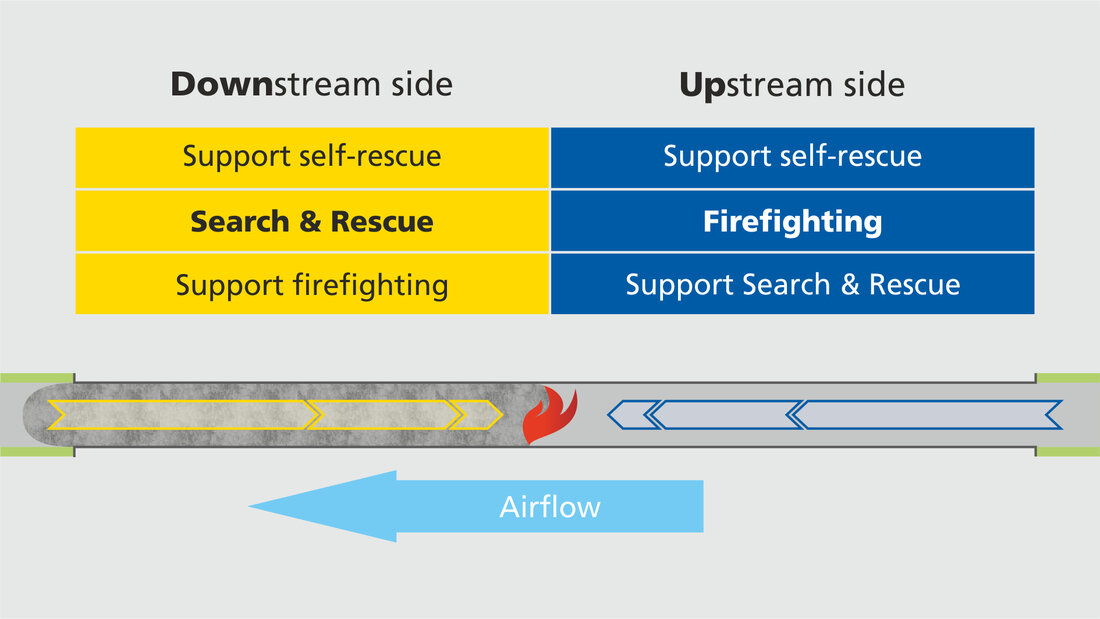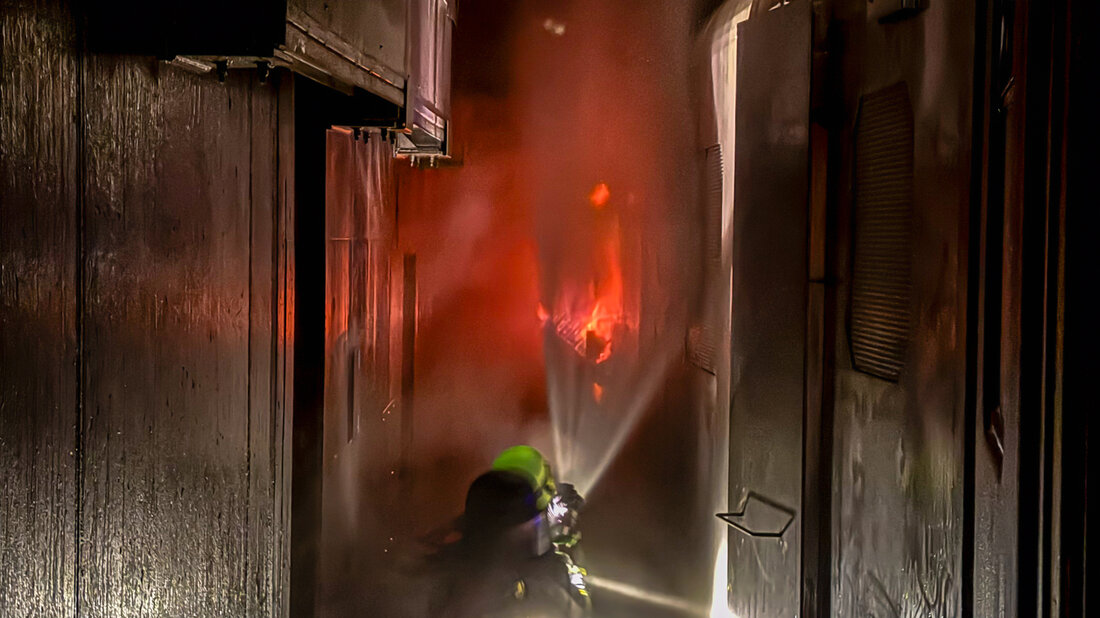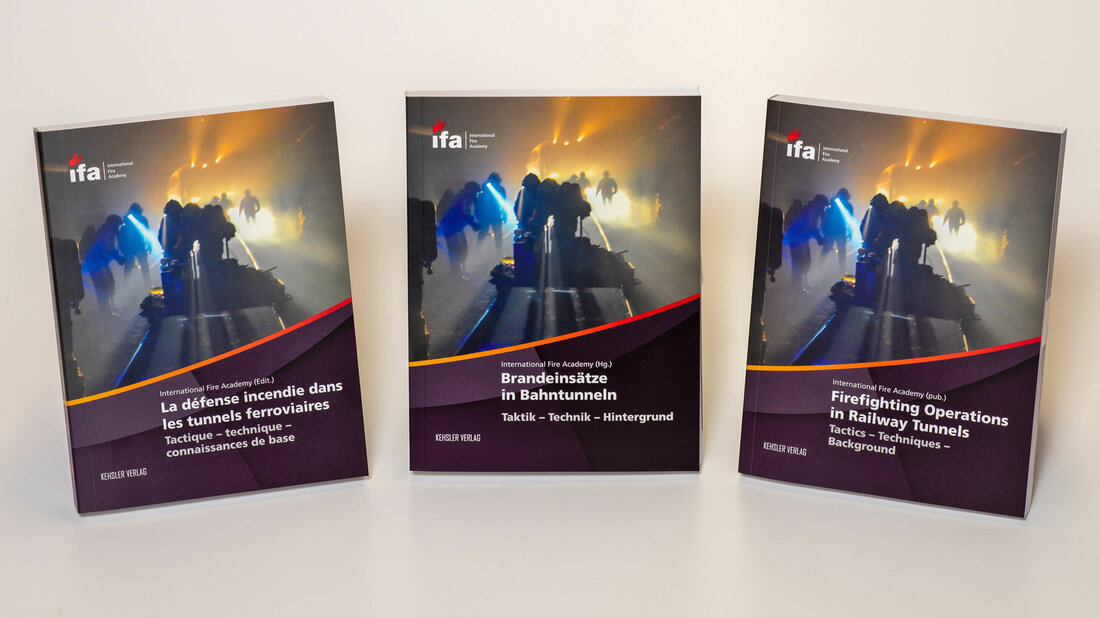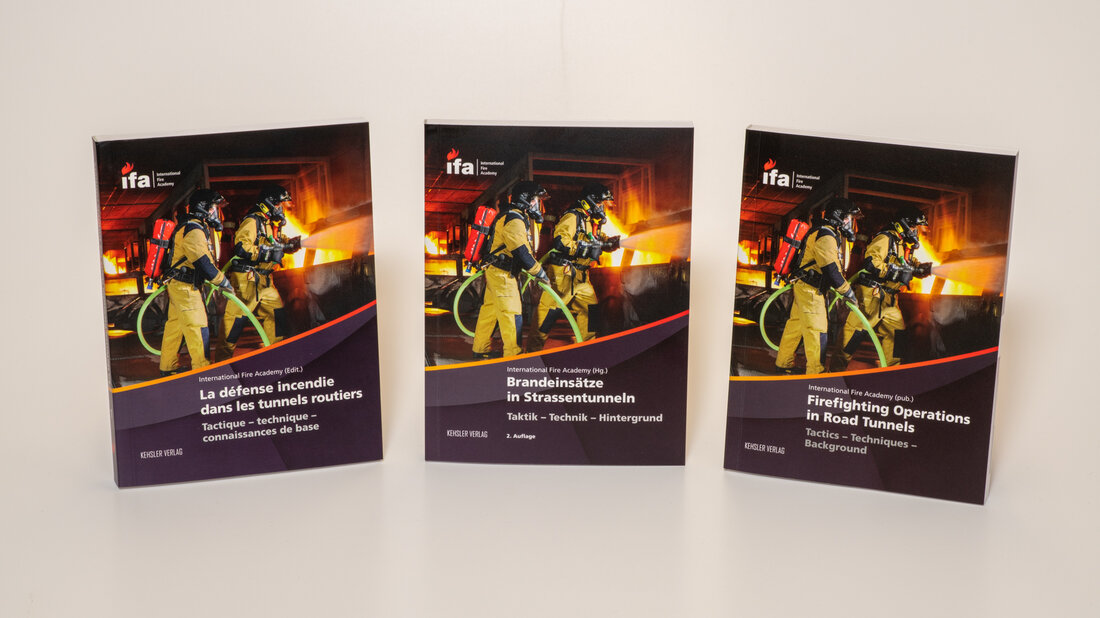The International Fire Academy recommends attacking tunnel fires from both sides of the tunnel from the first call-out. Course participants repeatedly ask whether this personnel-intensive two-sided attack is really necessary. In this magazine article, we explain the arguments favouring this approach.
Two-sided attack: at least 14 firefighters per portal side
A two-sided attack means deploying sufficient firefighters on both sides of the portal right from the start of a call-out to be able to deploy at least one two-person team for reconnaissance and two five-person teams for extinguishing or search & rescue. Including two officers results in a personnel requirement of at least 14 firefighters per portal side, in addition to the required engine operators, depending on the vehicle configuration.

Two sides with different tasks
The most crucial argument in favour of the two-sided attack is that in the case of a fire in a tunnel, there is an upstream and downstream side with differing tasks and working conditions. On the upstream side, conditions are usually good for a fire attack. On the downstream side, however, searching for people in the smoke-filled area is necessary. To be able to extinguish the fire on the upstream side and search and rescue on the downstream side simultaneously, firefighters are needed on both sides of the fire and, therefore, on both sides at the portal.

Equal qualifications on both sides
Each portal side can be upstream or downstream, depending on the incident, current ventilation control and/or weather conditions. In railway tunnels without stationary ventilation, the airflow can even reverse during operation due to natural differences in air pressure. That is why all firefighters intended for deployment must be trained and equipped for both extinguishing and search & rescue. Only then can the tactical possibilities of the two-sided attack be used optimally, depending on the situation.

Whoever is fastest puts out the fire
In accordance with the tactical principle «extinguish in order to rescue», the fire should be extinguished as quickly as possible to stop the production of smoke and thus improve the conditions for self-rescue and rescue as well as all other operational measures. The portal site from which this objective can best be achieved depends on many factors and can, therefore, only be decided on a situational basis.

It is, therefore, an advantage if sufficient personnel are available on both sides of the portal right from the start. Then, the unit most likely to extinguish the fire as quickly as possible under the given conditions can be deployed to fight the fire. Depending on the tunnel system, this unit can advance to the fire scene in the affected tube or carry out the fire attack via the unaffected parallel tube or a safety tunnel.
Two-sided attack opens up many options
The two-sided attack opens up many tactical options. For example, in the case that access to the fire is blocked from one side and rapid firefighting success can only be achieved by attacking via a safety tunnel or the second tube.

Our textbooks «Firefighting Operations in Road Tunnels» and «Firefighting Operations in Railway Tunnels» contain many examples that can also be used as scenarios for on-site training.

Practising precise communication is essential
The situational coordination of the units at the two portal sites requires precise communication. For this reason, coordination between the officers on both sides of the portal is a focal point of tactical training at the International Fire Academy and should also be practised intensively at home.

Two-sided attack proven in practice
The magazine article about a fire incident in the Bürgerwaldtunnel near Waldhut-Tiengen describes in detail how the different conditions on the upstream and downstream sides can be used tactically and why an attack should be launched on both sides of the portal.





![[Translate to English:] Stabsraum [Translate to English:] Stabsraum für den Lötschberg-Basistunnel mit Besprechungstisch und Funktionswesten über den Stuhllehnen](/fileadmin/_processed_/9/4/csm_ifa_MAG_418_Pilot67_2ec5b6b7d9.jpg)